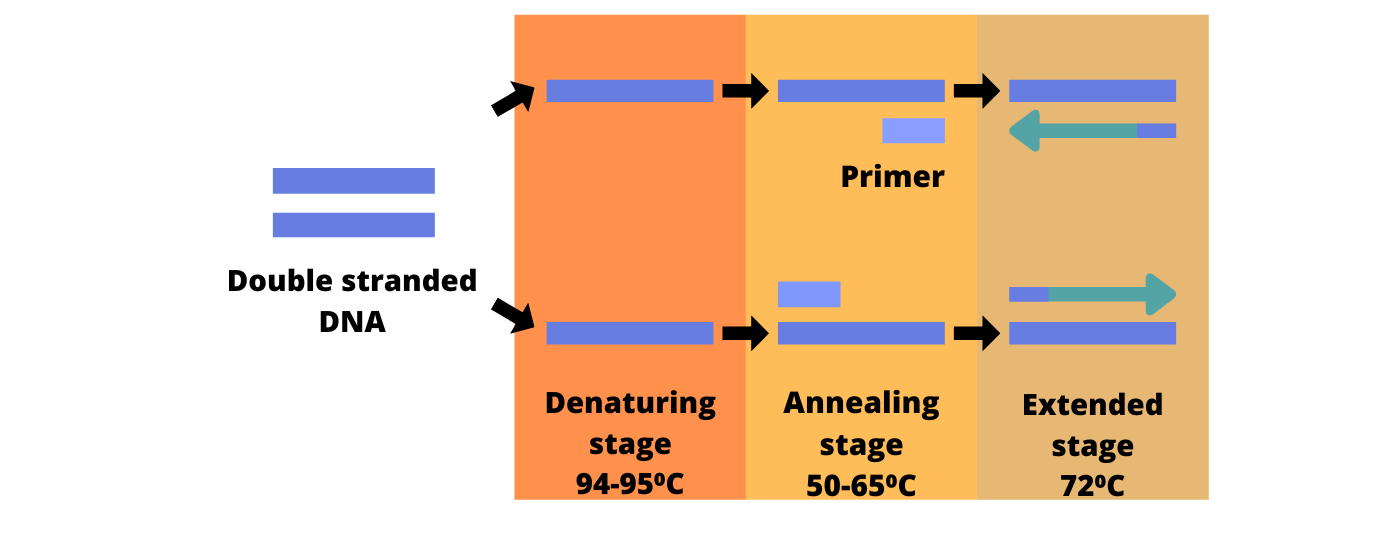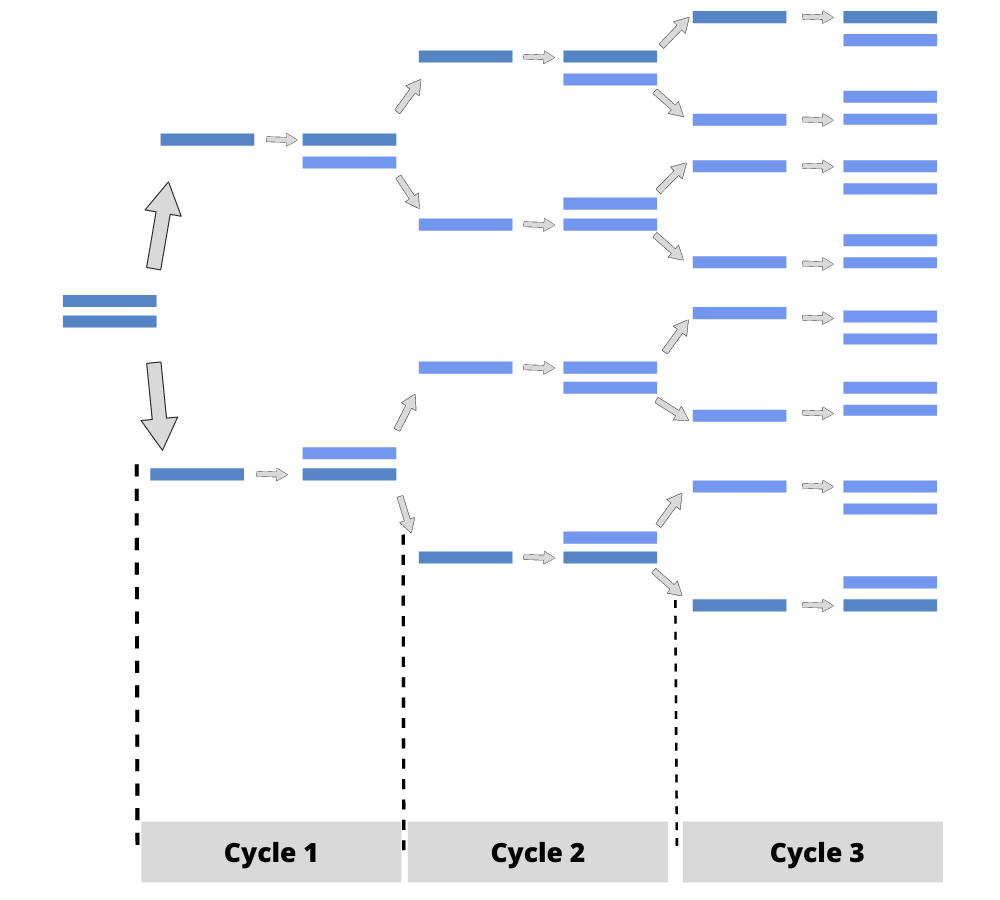Introduction:
Nowadays, Earth is affected by a new type of virus called Covid 19. This virus has shocked the whole world with its pandemic spread. But why I am talking about this pandemic situation is, whenever someone is facing flu-like symptoms so the doctor advised a Diagnostic test called ad PCR. You all are aware of this test or the word “PCR”.
A lay man just knows the word but he always Questions’s what a PCR is? PCR is an abbreviation of Polymerase chain reaction which is a technique used to amplify DNA into its multiple copies. So we will see the different components and steps involved in this Diagnostic Test.
History:
Back in 1976, the enzyme Taq DNA Polymerase was discovered with a help of Thermus aquaticus. (Bacteria). This means that scientists were very keen that we have now a thermostable enzyme that can give a lot of advancement in the field of Molecular biology. After this Kary mulis who was a biochemist in California discovered the new technique with the help of Taq DNA polymerase.
This technique was named POLYMERASE CHAIN REACTION (PCR) as the name indicates the use of polymerase that is used in the repeating process. This technique was later modified by other scientists and developed new types. In modern diagnosis, PCR is considered one of the most important techniques in the laboratory.
Components of PCR:
Components of PCR reaction are referred to as material that is used to do a simple PCR reaction. PCR is a chain reaction means once the material is used at the start and the whole process is done automatically. Let’s now overview the basic components of PCR reaction.
- Its starts with the double-stranded template DNA that includes the target Sequence.
- Primers (short single-stranded DNA sequences that are complementary to DNA sequences).
- dNTPs.
- DNA polymerase.
- Buffer solution.
- Incubators (today automatic thermocyclers are used).
PCR Steps:

Main steps in the polymerase chain reaction (PCR)
PCR is a technique used to produce a million copies of a specific sequence of DNA that is required. There are three steps with sometime 4 to start a PCR reaction. These steps are important so all of the steps will be discussed separately.
- Denaturation
- Annealing
- Extension
- Denaturation:
In this first step of PCR, the temperature is increased above 94 to 95 degrees Celsius. This temperature increase causes the breakage of the Hydrogen bond between DNA base pairs. When the complementary base pairs are separated, this causes the Separations of DNA to double helix structure (denature).
- Annealing:
In the second step, Primer is added into already denatured DNA. The temperature is lowered up to 50-65 degree Celsius. This lower temperature causes the primer to bind or anneal on the specific site of DNA. Primer binds to the bases that are present in DNA. This process is known as annealing.
- Extension:
This is the most step as it makes new complementary strands of DNA. Temperature increases to 70 to 75 degrees Celsius. The extension of the complementary strand needs a DNA polymerase enzyme. This enzyme needs a specific temperature that uses dNTPs to form a new strand. This process is called Extension.

Polymerase chain reaction (PCR) produces lots of copies of DNA
This cycle is repeated many times and forms millions of copies of DNA.
Types of PCR:
PCR has a lot of new types that are making molecular biology easier to understand. Following are some types that are discovered.
- Real-time PCR (qPCR or Quantitative PCR):
Most used type of PCR, even its available in the small diagnostic laboratory. This is the type in which amplification of DNA and also numbering of specific DNA is done. This is done using fluorescent dyes which are available commercially. For example cloning of virus such as Dengue virus and Hepatitis C virus. Cloning of Bacteria such as Salmonella Typhi Etc.
- Reverse transcriptase PCR (RT PCR):
As the name indicates, this type of PCR involves Reverse Transcriptase (RT). That why this PCR is used for the amplification of RNA. Reverse transcriptase helps to form cDNA from RNA, which is then used for PCR amplification.
- Multiplex PCR:
The modified type of PCR in which multiple specific target sequences are amplified using multiple primers in a single PCR mixture. It means that in a single time we can amplify multiple needed sites, instead of running them in separate amplification. This is cost-effective PCR.
- Nested PCR
Used where you need two sets of new primers used against the same targeted DNA. This type of PCR is specific for the target DNA and has low sensitivity. These are also cost-effective assets of primer that are used at a single time.
Uses of Polymerase chain reaction:
- One of the most important applications of Using PCR is GENE EXPRESSION. Real-time PCR is used for gene expression. We can also determine the change of expression in any cell, tissue and, molecule morphology.
- PCR is also used in cloning. PCR is generally utilized in cloning DNA (Deoxyribo Nucleic Acid) parts of interest, in a method known as PCR cloning.
- It is also used to detect simple sequencing of DNA to read.
- We can also do gene isolation through PCR. It is done by selective DNA amplification on a specific site.
- Polymerase chain reaction is also used to detect genetic changes or variations in different types of allele.
- We can also add plasmids or add a special type of mutation in a specific cell with the help of using PCR.
- PCR is one of the most important techniques nowadays used in the Field of Forensic, clinical bacteriology, virology and, clinical diagnostic.
- It is also used in agriculture biotechnology for detecting Plants genotyping for breedings. Etc.
FAQs:
What does PCR stand for?
PCR stands for polymerase chain reaction. It is the diagnostic test used to amplify DNA into its multiple copies. Today it is used in both research and diagnoses.
Is PCR test natural?
Yes PCR test has all techniques following the natural process such as transcription and translation. Only uses the commercially available products.
What is rt PCR?
Reverse transcriptase PCR (RT PCR) is a type of PCR that uses reverse transcriptase enzyme for the amplification of RNA. A cDNA is produced with the help of RT from RNA to form multiple copies of RNA.
Doctor’s opinion about PCR
The importance of PCR recommendation by the doctors over the ELISA test is due to the sensitivity and specificity of this test. According to the Doctors Laboratory UK, Covid PCR gives 98 and 100% of PCR sensitivity and specificity. This shows the actual numbering as WHO also recommended nucleic acid testing of PCR for detecting Covid Variant. They also recommend to Healthcare workers to give PCR results with consideration of time, used sample, clinical observation and, epidemiological information. Today PCR is used in every diagnostic laboratory all over the world.
